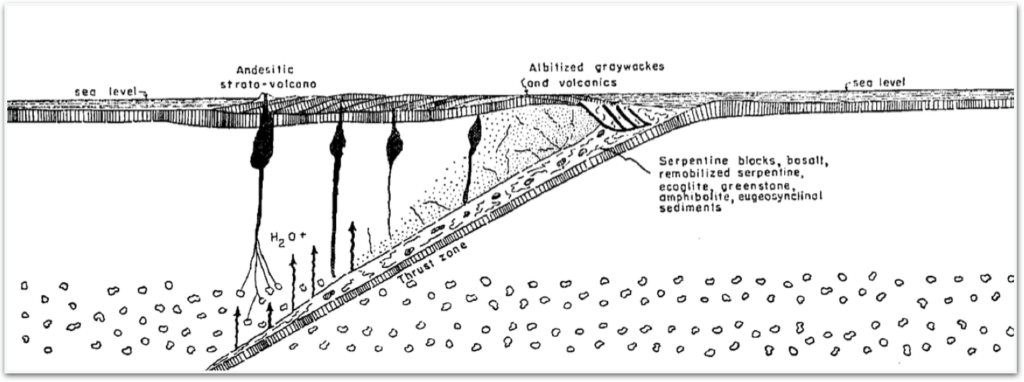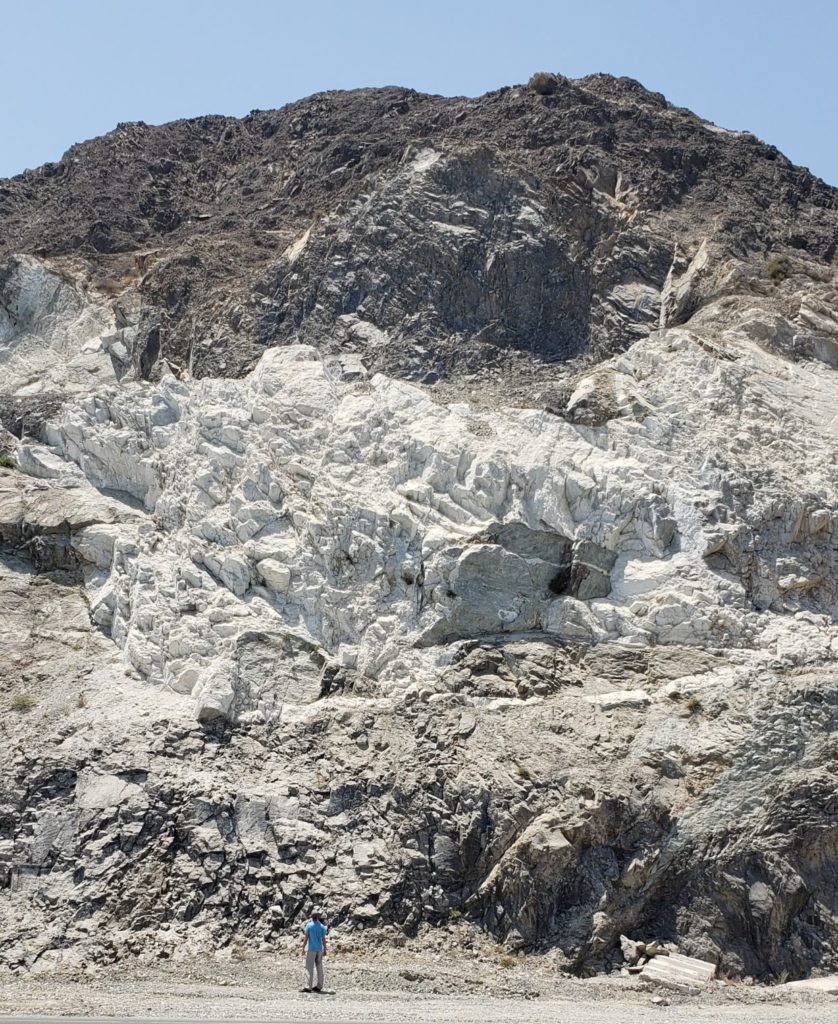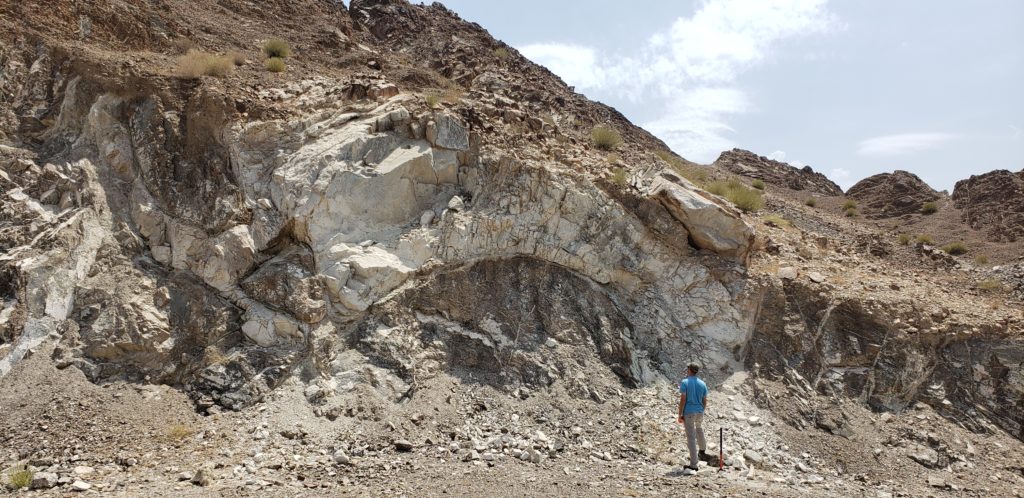
It has long been theorized that sediment can be entrained into a subduction zone and carried into the mantle. Even before the theory of sea-floor spreading was fully realized by J. Tuzo Wilson, in 1962 Bob Coats proposed that sediment deposited on the ocean floor was carried deep into the mantle underneath the Aleutian volcanic chain.

Since that time, geologists have sought for evidence to support this hypothesis and if sediment really is carried along subducting plates into the mantle, what happens to that sediment. Importantly, there is pretty clear evidence that subducted sediment is incorporated into arc magmas. Plank et al. (2007) demonstrated a clear connection between the composition of sediment on the subducting plate with the composition of the volcanic islands directly in line with compositionally distinct sediment. There are numerous proposals from shallow subduction and relamination of sediment on the lower continental crust (Hacker et al., 2011) to deep subduction where partially molten migmatite diapirs rising through the asthenosphere (Behn et al., 2011).

However, one challenge remains as the observations relating to sediment subduction and assimilation into magmatic systems are all indirect observations. We are seeing the products of supposed magma/sediment mixing, but we are not observing the site of said mixing. Another possibility is that magma/sediment mixing occurs in the upper crust as the arc magma traverses the continental crust and assimilates deeply buried (meta)sedimentary rocks. Numerous studies have demonstrated to the presence of sedimentary migmatites at the base of exhumed continental arcs with clear mixing relationships with the arc magmas (Lackey et al., 2008; Miller et al., 2016).
So where can we go to directly observe sediment melting in the mantle? The answer is ophiolites where thick sections of oceanic lithosphere are exhumed on the continental margins during continental collision. Our research team is investigating the processes of sediment melting in the mantle in ophiolite around the world including in Oman, UAE, New Caledonia, Alaska, and Quebec.
The granitoid dykes of the UAE/Oman Ophiolite are of particular interest as they were recently shown to have the highest δ18O compositions of any igneous rock ever discovered (Spencer et al., 2016). We argue these dykes represent the first-ever direct and in situ evidence of sediment melting in the mantle. Future work will examine these granitoids in greater detail to better understand their petrogenesis as well as whether other localities with similar granitoids exist in other ophiolite bodies around the world.
Related publications
Spencer, C. J., Cavosie, A. J., Raub, T. D., Rollinson, H., Jeon, H., Searle, M. P., Miller, J. A., McDonald, B. J., & Evans, N. J. (2017). Evidence for melting mud in Earth’s mantle from extreme oxygen isotope signatures in zircon. Geology, 45(11), 975–978 (available here).

